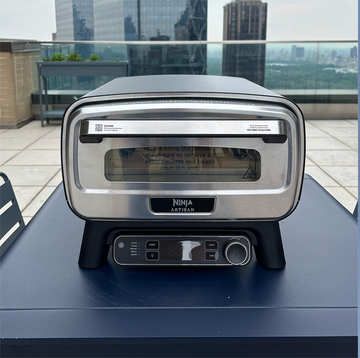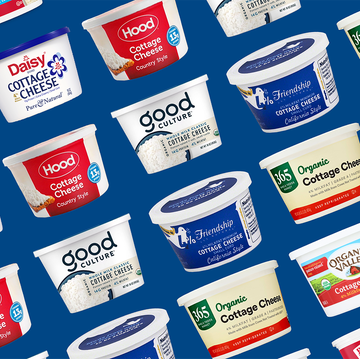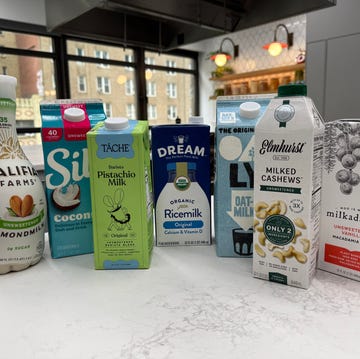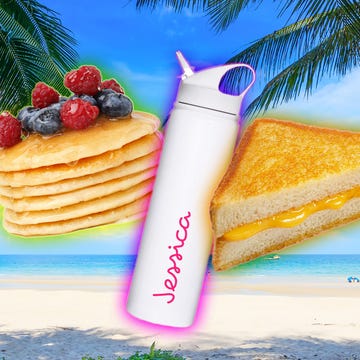1Getting cash required a trip to the bank.
 Getty Images
Getty ImagesAlthough Barclays introduced the world's first automated teller machine in London in 1967, ATMs didn't make their way across the big pond until 1969.
2The were no 'R' rated movies.
 Getty Images
Getty Images Advertisement - Continue Reading Below
3The Beatles were still a band.
 Getty Images
Getty ImagesThe group released their White Album and their movie, Yellow Submarine, in November 1968.
4Humans hadn't walked on the moon.
 Getty Images
Getty ImagesIn 1968, the Apollo program's second manned spacecraft orbited the moon and safely returned on Dec. 28—seven months before Apollo 11's actual moon landing.
Advertisement - Continue Reading Below
5There was no MLK Jr. Day.
 Getty Images
Getty ImagesCongressman John Conyers Jr. introduced legislation to create the holiday shortly after Dr. King's assassination on April 4, 1968, but it took 15 years and a petition signed by more than 3 million people to make it a reality. President Ronald Reagan signed the bill into law in 1983 and it was first observed on Jan. 15, 1986.
Pictured: Dr. King's widow Coretta Scott King, son Dexter, and sister Christine Farris with President Reagan.
6Housing discrimination was rampant.
 Getty Images
Getty ImagesPresident Johnson signed the Civil Rights Act of 1968, also called the Fair Housing Act, on April 11, 1968, just seven days after King's assassination. The law prohibits discrimination based on race, gender, religion, or national origin when renting or selling a home.
Advertisement - Continue Reading Below
7Couples married much earlier in life.
 Getty Images
Getty ImagesIn 1968, the median age of first marriage was 20 for women and 23 for men. Back then, close to 70 percent of American adults were married; today only 51 percent are, according to a Pew Research Center study from 2011. The modern bride is 26.5 years old on average and the groom 28.7.
Pictured: Julie Nixon, daughter of President Richard Nixon, and David Eisenhower, grandson of former President Dwight Eisenhower, on their wedding day, Dec. 22, 1968.
8Secret Service didn't protect presidential candidates.
 Getty Images
Getty ImagesAfter presidential hopeful Sen. Robert F. Kennedy was assassinated on the campaign trail on June 5, 1968, Congress passed legislation calling for Secret Service protection for major presidential candidates.
Advertisement - Continue Reading Below
9The drinking age was 18.
 Getty Images
Getty ImagesIt became 21 when Congress passed the National Minimum Drinking Age Act on July 17, 1984.
10Interracial romance wasn't for TV.
 Getty Images
Getty ImagesWilliam Shatner and Nichelle Nichols broke that barrier with a kiss on Nov. 2, 1968 in the Star Trek episode "Plato's Stepchildren." Before it aired, NBC censors reportedly expressed concern that Southern TV affiliates would refuse to run it.
Advertisement - Continue Reading Below
11Seatbelts weren't mandatory.
 Getty Images
Getty ImagesThe first federal seatbelt law, requiring all new cars to have a belt for each seat, took effect in1968, but it would be decades before the first state law that required wearing one—that happened in New York on December 1, 1984.
12A gallon of gas cost 34 cents.
 Getty Images
Getty ImagesThat's the equivalent of $2.31 today when adjusted for inflation—very comparable to today's national average of $2.48 a gallon.
Advertisement - Continue Reading Below
13Air travel was for the privileged.
 Getty Images
Getty ImagesThe 1969 debut of the Boeing 747, which could hold double the number of passengers as its predecessor, the 707, led to a dramatic drop in flight prices.
149-1-1 didn't exist.
 Getty Images
Getty ImagesA single, nationwide phone number for emergency assistance was established in1968 following a meeting between the FCC and AT&T. The digits 9-1-1 were chosen because they had never before been used as an area code or other service code.
Pictured: 911 call center workers in Los Angeles circa 1996.
Advertisement - Continue Reading Below
15Lead-based paint was all the rage.
 Getty Images
Getty ImagesWidely used in homes and schools, the hazardous substance wasn't banned until 1978, which is why the CDC recommends that children and pregnant women stay away from any homes built before then that are undergoing renovation.
16Cars weren't equipped with airbags.
 Getty Images
Getty ImagesThe automated safety devices were invented in 1968 and developed to deploy on impact, inflating with nitrogen gas.
Advertisement - Continue Reading Below
17Heart transplants weren't an option.
 Getty Images
Getty ImagesAlthough South African cardiac surgeon Christiaan Barnard completed the first successful heart transplant in 1967, the first adult heart transplant in the U.S. took place at the Stanford University Hospital in 1968. Of the roughly 100 heart transplants worldwide that year, only a third were successful beyond three months.
Pictured: A mock operating theatre at the Heart of Cape Town museum at Groote Schuur Hospital in Cape Town.
18Dialing involved clockwise finger rotation.
 Getty Images
Getty ImagesPush-button phones became available commercially in1963, but rotary phones remained popular for household use until well into the '70s.
Advertisement - Continue Reading Below
19Phone calls meant staying in one spot.
 Getty Images
Getty ImagesUnless you had a really long cord. A cordless phone prototype was invented in 1965, but it didn't become popular for residential use until the early '80s. The first cell phone came along in 1979, followed by the digital cell phone 1988.
20Local calls were only 7 digits.
 Getty Images
Getty ImagesCalling someone in the same town didn't require an area code until the early 2000s, when, the New York Times reported, telecomm regulators began facing "number exhaustion" due to an expanding population.
Advertisement - Continue Reading Below
Advertisement - Continue Reading Below
Advertisement - Continue Reading Below

































